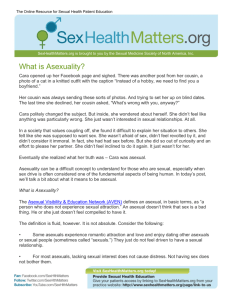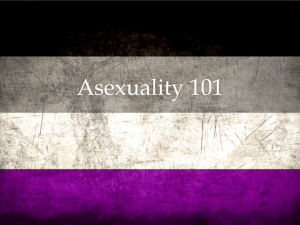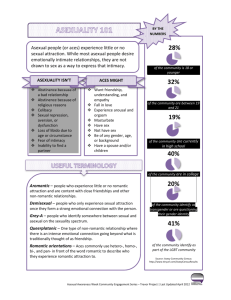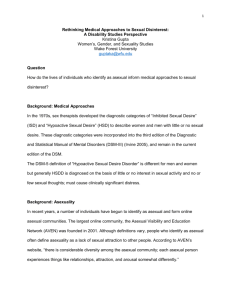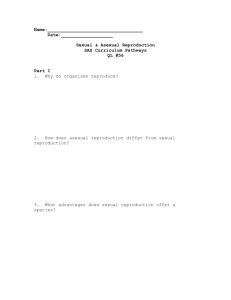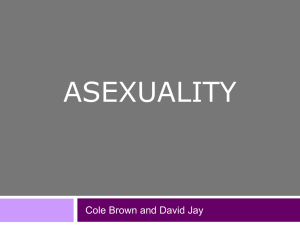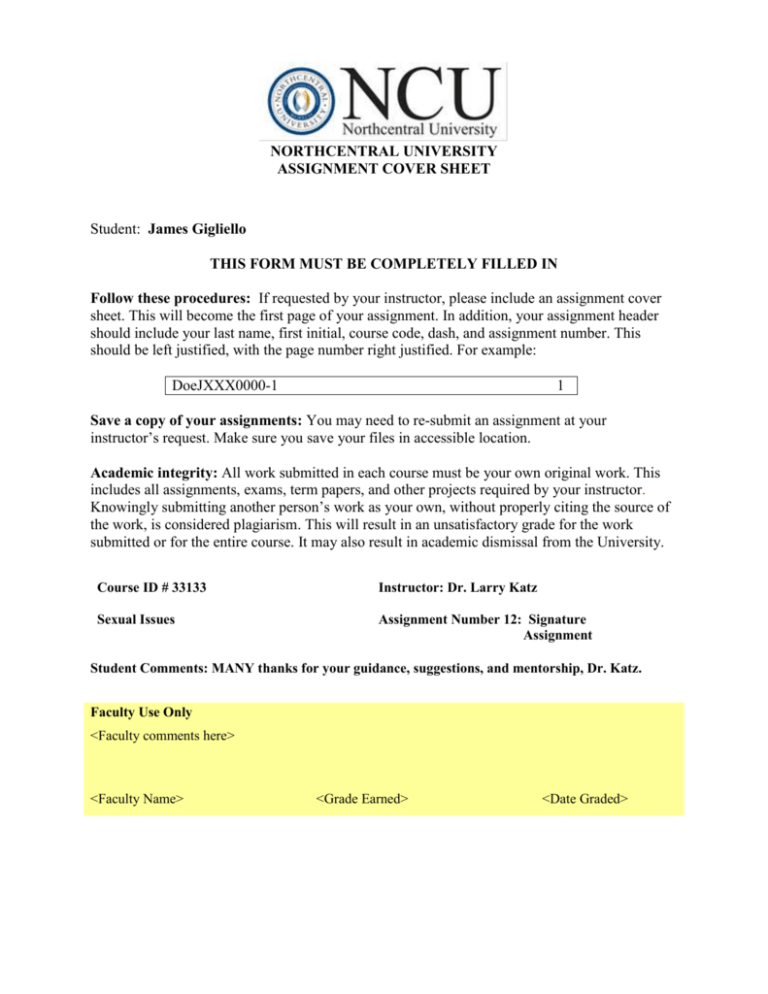
NORTHCENTRAL UNIVERSITY
ASSIGNMENT COVER SHEET
Student: James Gigliello
THIS FORM MUST BE COMPLETELY FILLED IN
Follow these procedures: If requested by your instructor, please include an assignment cover
sheet. This will become the first page of your assignment. In addition, your assignment header
should include your last name, first initial, course code, dash, and assignment number. This
should be left justified, with the page number right justified. For example:
DoeJXXX0000-1
1
Save a copy of your assignments: You may need to re-submit an assignment at your
instructor’s request. Make sure you save your files in accessible location.
Academic integrity: All work submitted in each course must be your own original work. This
includes all assignments, exams, term papers, and other projects required by your instructor.
Knowingly submitting another person’s work as your own, without properly citing the source of
the work, is considered plagiarism. This will result in an unsatisfactory grade for the work
submitted or for the entire course. It may also result in academic dismissal from the University.
Course ID # 33133
Instructor: Dr. Larry Katz
Sexual Issues
Assignment Number 12: Signature
Assignment
Student Comments: MANY thanks for your guidance, suggestions, and mentorship, Dr. Katz.
Faculty Use Only
<Faculty comments here>
<Faculty Name>
<Grade Earned>
<Date Graded>
A Brief Review of Asexuality and Implications for Further Research
Sexual Issues
Activity 12: Signature Assignment
Submitted to Northcentral University
Graduate Faculty of the School of Psychology
In Partial Fulfillment of the
Requirements for the Degree of
DOCTOR OF PHILOSOPHY
By
James Gigliello
Prescott Valley, Arizona
October, 2015
1
Table of Contents
Topic Overview..………………………………………………………………………………….3
Brief Literature Review…………………………………………………………………………...4
Clinical Implications……………………………………………………………………………..12
Future Research Implications……………………………………………………………………12
Problem Statement & Research Question………………………………………………………..13
Conclusion……………………………………………………………………………………….14
References.……………………………………………………………………………………….16
2
Topic Overview
The topic of asexuality brings with it confusion, misunderstandings and head shaking.
Phrases that I often hear from people, ranging from teachers to healthcare workers and even
therapists, range from “I don’t believe that these people are telling the truth” to “he’s a healthy
young guy and he doesn’t even masturbate. I don’t believe it. He’s just looking for attention.”
Many people in the general population don’t even know what the term means. The purpose of
this proposal is to shed further light and awareness on this issue and add to the existing body of
knowledge.
The research on this topic is fairly recent with the majority of the work beginning with
the groundbreaking research conducted by Bogaert (2004). He conducted the first large study on
this issue. All research conducted from that point forward uses Bogaert as a starting point for
their own research into the topic. His research has raised many questions about the concept and
definition of asexuals. Is it simply a lack of attraction or a hypo-sexual desire disorder. The
earlier literature would suggest it as more of a disorder but as research and time marched on it
has now been viewed as a sexual orientation.
Bogaert (2015), felt that more research needs to be performed because of the
complexities between attraction and desire. However theory and recent developments are
suggestive that the lack of desire in asexuals can be a primary lack of desire in general and not
simply a lack of desire which again points to the lack of any sexual attraction or any desire for
another person, and this can be one of the defining characteristics of those who self-identify as
asexual. It must be noted that any lack of sexual attraction does not necessarily infer one as
asexual. However it is clear from the research that many people who lack such sexual attraction
do indeed identify as asexual. This self-identification of one as asexual are important from both a
developmental and a sociocultural point of view. It must also be noted that not all people who
3
identify as asexual do not lack all forms of sexual desire due to the fact that many of them
masturbate and have sexual fantasies, which will be discussed shortly.
In addition, those who identify as asexual do not necessarily mean that there is a lack of
sexual experience in sexual activity at some point in their lives. It must also be stated however
there is evidence of a lessened degree of sexual activity for those who do indeed identify as
asexual. The assumption that asexuality implies a total lack of lust or sexual experience is not
necessarily so (Bogaert 2004; 2015).
It has been noted in the original study by Bogaert (2004; 2006), that approximately 1% of
the population identifies as asexual, meaning that these individuals have never had any sexual
attraction to anyone be it either heterosexual or homosexual attraction. In this original study,
18,000 British residents were used in a national probability. In the survey they were questioned
about varying degrees of attraction to others. In this survey however was the question if they had
any sexual attraction to anyone at all, which had never been done before. This became the
standard definition of asexuality. While there are variations, this paper will use this as the
accepted definition. One interesting note of this study, this percentage of asexuality (1%) had a
similar result to the prevalence to the total number of those who responded that they were
attracted to their same sex counterparts (lesbian and gay men). Przybylo (2012), would argue that
sexuality, and now asexuality, is quickly becoming its own sexual orientation separate from any
other because it is specific to our cultural sensibilities and contingencies. Because of this, science
provides what is and is not credible based on how it shapes how asexuality works and operates.
One earlier study by Storms (1980), used asexuality in the context of a sexual orientation
also. In his work there were three groups of people: those who were attracted to those of the
opposite sex, (straight); those who were attracted to those of the same sex (gay, lesbian) and
4
those who had little to no attraction to both of the above conditions (asexual). It must be noted
that there was no large scale study nor were there results or hypotheses. The article was a
theoretical framework of individuals and their sexual orientations. An interesting occurrence
appeared after the 2004 study by Bogaert. In the latter part of 2004, CNN decided to conduct an
informal internet poll on the sexual orientation of their viewers by self-identifying. Out of their
110,000 who self-reported, 6% (substantially more than the Bogaert study), identified as being
asexual (“Study,” 2004). Whether this number is accurate or not, the interesting aspect of this
report is that a significant number of people chose to self-identify with a term that is not
traditional in either academia or in clinical observation.
Brief Literature Review
Since this topic only came into light in 2004, the research has not been in abundance
because it is a new topic of study and interest. At this juncture, I will now provide a literature
review on the various themes and studies into asexuality. The scope of this paper is not to
provide the reader with a complete analyses of all research that has been presented since 2004,
but of the more important aspects, findings, variations and themes that have emerged from what
has been studied and discovered. Stevenson (2015), however would argue that there is no
singular standard operational definition of what asexuality is. Research on this important topic is
imperative not only because it will enlighten us on the topic of asexuality but because it will give
us important information on our own understanding of sexuality and the various sexual
orientations.
The leading group for information on asexuality comes from the Asexual Visibility and
Education Network (AVEN). This is a web community of tens of thousands of individuals not
5
just from the United States but from many other countries and their site is translated into over a
dozen languages. They communicate with each other through forums, communication networks
in their perspective countries, face to face real time meetings, groups. This is however not a
homogenous group of individuals. Not all asexuals agree with the standard definition. This is due
to cultural differences and beliefs, their identity with different genders and forms of gender
fluidity, while some have heterosexual or homosexual inclinations, while others have varying
types of relationships ranging from romantic to aromantic, polyamorous as well as monogamous
and their numbers have surpassed 30,000 members (Cerankowski & Milks, 2010). The vast
majority of research I have found in the literature utilizes this site for self-reporting
questionnaires. AVEN is considered one of the most, if not the most, comprehensive
informational sites on the topic of asexuality. They have formed a task force to have the
Diagnostic and Statistical Manual of Mental Disorders remove asexuality as a hypoactive sexual
desire disorder (HSDD) and create a new definition that is more asexual friendly due to the
pejorative nature of asexuality as a disorder which requires mental or psychiatric attention
because the vast majority of these individuals do not experience distress over their lack of sexual
attraction or feelings toward others (Cerankowski & Milks, 2010). To put this into perspective,
being asexual does not presume any kind of mental or psychopathology.
An expansion on Bogaert’s 2004 and 2006 work is demonstrated by Prause & Graham
(2007). This important research was the first to analyze individual responses who have identified
themselves as asexual. Their convenience sample (N = 41) demonstrated that those who identify
as asexuals report less sexual arousal and excitability and less sexual desire in general with a
partner or anyone in general. This was the first time that a classification and specific
characteristics were noted in a research study.
6
Thus far as one can see, this is a complicated topic with no black or white conclusions.
The literature indicates the same issues often with conflicting points of view. This is to be
expected due to the newness of the topic and the attention it has been receiving over the past 11
years. Although it was sporadically spoken of in literature, there didn’t appear to be any
significant interest or desire to research the topic until after Bogaert’s work in 2004. The
literature review will continue.
One recent, and very important piece of research to further the interest and discussion of
asexuality was performed by Yule, Brotto, & Gorzalka (2015). Their study developed and
validated a questionnaire to assess asexuality and resulted in the Asexuality Identification Scale
(AIS). For the complete AIS questionnaire, please refer to Yule, Brotto & Gorzalka, 2015; p.
159). Up till this point, practically all the research that has been done utilized AVEN which
presented social scientists with limited information and a lack of a validated tool that could
identify those individuals as asexual. From a methodological standpoint, the authors felt that
individuals should be used from across online communities as well as others who have not either
come across, found or are even aware of these communities that exist online. The questionnaire
that was developed through this study had only one intent: to differentiate those who were
asexuals from those who were sexual without providing any other information about the sexual
orientation of asexuality. Since this is a recent study, with only the data from one protocol, time
and future research will be the judge on how well the AIS questionnaire accomplished its goal.
Another huge issue is the problem of self-identified asexuals who do indeed consider
themselves asexual but these individuals are unaware of asexuality as either a phenomena or
sexual orientation or even of the existence of other asexual individuals (DeLuzio-Chasin, 2011).
Another problem according to this author are the subgroups within the asexual community that
7
are not studied. They believe that there are sub-samples that are representative of asexuals but
they differ in their beliefs of what asexuality mean to them. Fitting them into a continuous (fluid)
perspective is imperative and from a theoretical point of view, crucial because it would avoid
shaping and analyzing data to fit asexual participants into a lump sum category.
Following with the above statement is surprisingly an article by the man who began the
first study back in 2004. Bogaert in 2012, presented evidence of those along this continuum but
who he considers to have an apparent paraphilia by some who identify as asexual that report no
sexual attraction or, as he coins the term “autochorissexualism or identity-less sexuality”
(Bogaert, 2012, p. 1513). He reports that 70% of asexual females and 80% of asexual males who
self-report, have masturbated. Furthermore, 40% had masturbated within the past 30 days.
Although they self-stimulate and masturbate through fantasy and porn, it is disconnected from
themselves.
In addressing the issue of sexual fantasy and masturbation among asexuals, an important
study by Yule, Brotto, & Goralka (2014), addresses this issue. The belief is that asexual
individuals do not have sexual attraction to others and therefore do not engage in sex. Little has
been written on those that, although they do not engage in sexual activity, they do have sexual
fantasies and do masturbate. Now does this still qualify as asexual behavior or not. Sexual
activity occurs, just not with another individual since there is no sexual attraction but because
they are able to sexual self-stimulate and climax, does this still identify them as asexual or is
there a continuum of asexuality across the board.
The interesting findings of the Yule, Brotto, & Goralka (2014) study showed there are
notable pattern differences on those who self-identify as asexual versus those who are sexual. I
will also interject that based on the findings I have some observations. It was noted that 40% of
8
those who identify as asexual have never had any sexual fantasy but what the study does not
mention is that 60% have had such fantasies. Asexuals were less likely to have masturbated
within the past 30 days but that cannot assume that outside of that time span their rate of
masturbation was comparable to those who were sexual. The study does not address this either.
A sizable 11% of asexuals who report having sexual fantasies did not consist of other people. I
feel that this throws a wrench into the proverbial engine. It is apparent that asexual individuals
do indeed have one form or another of sexual fantasies and do indeed masturbate. Although there
is a percentage that does not fantasize about other people, there is a number who do. This also
comes back to the depersonalization of sexual fantasies, although it’s very difficult if next to
impossible to measure this because as has been seen many times in studies, self-reporting on
topics of sexuality can be inaccurate due to stigma and shame for being different.
On a different topic within asexuality is the individual being able to develop close
relationships and friendships even if they are devoid of any sexual activity. It must be noted that
what I have found in the literature indicates that this also runs through a continuum and is not a
black and white issues. One article by Scott & Dawson (2015), attempts to provide answers as to
the above statement utilizing Symbolic Interactionism when studying asexual individuals. There
are three key themes that are noted when one is to assess the asexual individual. They range from
key social processes that are involved in becoming asexual, how are identities shaped, what
shapes them, and what is their understanding when it pertains to the differences in intimacy
within relationships and to determine if there are any specific and distinct differences in the
practices of asexuality intimacy. Scott & Dawson (2015) claim that asexuality is more than an
orientation but an individualized reflex consisting of a lifelong process of becoming which has
developed through various meaning that have developed through negotiations through symbolic
9
interactions throughout their lives.
The problem with this continues to be what I have previously stated, and that is that
asexuality lies along a continuum and although symbolic interactionism may indeed be a
possible explanation it cannot be used as an absolute. The subject confounds those in the social
sciences who continue to struggle with the definitions and understanding the vast differences
within the asexual community. This is why AVEN is so often used in research because it
encompasses all genders from male to female, gender fluid, queer, asexual or nonsexual. The
challenge arise when one has to research all these different self-identified genders through selfidentified surveys or questionnaires then formulate and interpret data on them; although the
literature only identifies four main clarifications: gay, straight, bisexual and asexual.
There is no other article that I was able to find for this literature review to support the
Symbolic Interactionism point of view for asexuals. Recent research conducted by van
Houdenhove, Gijs, T’Sjoen, & Enzlin (2015) points to a multidimensional approach to asexuals;
one I tend to agree with. Psychologists always try to fit people into their theoretical models and
there are at some points, times when one cannot do that. I believe that this is one of those times.
There is an overlap between asexual individuals in their lack of desire as well as differences that
overlap within this same group. Their study, as is many of these empirical studies on asexuals,
utilize the AVEN website. As stated earlier it is presently the only reliable large scale internet
organization on asexuality across many languages and countries. However that leaves out
everyone else who has never heard of the organization. I ponder how many asexual people are
out there who have no connection or even understanding of what they are experiencing.
In returning to the Houdenhove et.al. study (2015), they too utilized the AVEN website
10
for their participants. Self-identification as asexual depended upon differing variables. Interesting
data revealed that 71.3% of men self-identified as asexual and 69.2% of females. However based
on sexual behavior, only 48.5% categorized themselves as asexual. In regards to gender
differences, more women at 72.8% versus 58.8% of men categorized themselves as asexual
based on the lack of experiencing sexual attraction toward others. The view that sexual
orientation is a fluid, multidimensional concept which comprises many variables ranging from
behavior, desire, self-identification and each being measured on a continuum. This is where I
tend to agree with this concept.
The limitation and implications of all of these studies which utilize only the AVEN
website is that these online sexual communities by the very nature of what they are, limit the
generalizability of research toward the general population. All of the studies up to this point in
the literature review have been quantitative based on the AVEN internet community of asexuals.
A recent qualitative study was performed by MacNeela & Murphy (2015) on the topic of how
asexuals view themselves.
Interesting themes resulted from this study. There was an overwhelming lack of social
credibility as reported by those who identify as asexual. They felt it was not believable in a
heteronormative culture where these participants lived and this condition posed serious threats to
their own self perceptions. There were themes of psychological disorders, denial of this being a
legitimate orientation as well as being socially invisible. Other themes of stigma, fear of
disclosure and reprisals accompanied by fear of loss of friendships both in families and friends.
These are all very serious threats to one’s psychological and physical sense of self due to
ignorance about asexuality as an orientation.
11
Clinical Implications
According to Foster & Scherrer (2014), it is imperative that clinicians are supportive and
compassionate because asexuality is often stigmatized and is seen as a psychopathological
condition rather than a sexual orientation of a subset of the general population. Culturally
competent practices and training are needed to assist those who seek counseling and therapy. It is
important to note that there are those who also self-identify as gay, lesbian and bisexual
orientations. They may seek relationships without sexual contact. They may not be certain of
where they fit in or what they should do about their feelings. This is where the helping
professional should alleviate these issues and not add to them. Affirming clinical settings are
especially needed given the pressure and stress that these individuals experience as they do not
fit into any sexual group.
Multicultural competence is also a necessity (Foster & Scherrer, 2014) due to the
differing cultures and their specific beliefs around sexual activity. Gender differences and
variances are also needed for each culture also views these differently. All sexual minority
people are often and sometimes daily facing ostracism, heterosexism, bias, stigma, harassment
and threats to physical safety. The data from Foster & Scherrer (2014) review indicates three
central themes that have emerged: 1. a need for competent and multicultural care when dealing
with asxeual clients; 2. the expectations of bias from clinicians which caused asexual clients to
feel fearful and negative of dismissive treatment; and 3. the ability to have positive experiences
with clinicians sue to the methods in which these clinicians took affirming stances toward
clients. Even with some overlap, these three themes demonstrate clarity and cohesion to the
clinical experience of asexuals.
Future Research Implications
Several themes emerge from the review. Asexuality is no longer viewed as a paraphilia
12
or sexual disorder and is now viewed as a sexual orientation. There is a continuum of the term
and there are variations of meaning for each individual and what asexuality means to them.
Researchers are limited thus far in their finding participants and seem to utilize the one large
asexuality internet site known as AVEN which limits population generalization. As a result of
this, there are large gaps in research and many questions remain because the AVEN website is
where the majority of participants as used as a convenience sample and are pooled from.
According to Hinderliter (2009, p 621), his assessment best describes the problem:
“Using existing tools is easier than developing new ones, but there is a danger that existing tools
are inadequate for that subject. With respect to asexuality, there are two potential dangers with
using existing tools that could make the results either uninteresting or misleading: questions
assuming universal sexual desire/attraction and values embedded in constructs devaluing low/no
sexual desire.”
Problem Statement & Research Question
Little is known on the topic of asexuality since it has only become research worthy in
2004 with the work of Bogaert. It is also important to assist those who live with this sexual
orientation that may need clinical assessment and intervention. The purpose of this research
proposal is to add to the current body of knowledge about this topic and to further knowledge,
information and competency for the clinician who may one day have clients who are asexual and
need assistance.
There is little to no information on the topic of gay/lesbian/transgender/bisexuality in
regards to asexuality. The research question based on what I have discovered in the literature
review and topic overview becomes this. Do asexual individuals refrain from sexual activity as a
result of stigma, religious beliefs, fear of physical harm because they are gay, lesbian, queer,
gender fluid, gender neutral, transgender, or do they have a genuine lack of sexual desire toward
others?
13
The first part of the study would be to perform a large scale cross-sectional quantitative
study of college students utilizing the current AIS in a survey monkey through an anonymous
self-reporting on line internet format and, in addition to the questions contained in the AIS, I
would ask several more questions, such as: 1. Has your religious belief had any effect on your
sexual desire? 2. If you identify as gay or lesbian, does your religious belief have an influence on
having sexual feelings for other same sex individuals? 3. If you identify as transgender, does
your sexual reassignment play a role in your lack of sexual desire? 4. Have you experienced any
one time or long term sexual abuse either as a child, an adult, or while in a relationship?
I believe that if I were to perform this study, my focus would be on these four questions
and I would utilize statistical analyses such as chi square, mean, mode, and median along with
significance at the .05 level. A possible conclusion could be that there is significance to those
who have self-identified as asexual and have conflicts with their religious beliefs to the extent
that they developed a lack of sexual attraction to others. More people have been killed in the
name of God than any conflict on this earth since the beginning of organized religion.
A second possible conclusion is that a proportion of these self-identified asexuals have
had some form of sexual abuse either as a child or as an adult to the extent that they no longer
trust anyone who tells them that they are loved and therefore have no sexual attraction or interest
in anyone.
Conclusion
Asexuality can now be stated as being a fourth sexual orientation, alongside heterosexual
(straight), homosexual (gay, lesbian), and transgender. This is another sub-population that is
going to require services of culturally competent and compassionate mental health professionals
14
due to stigma, shame and a lack of understanding by many people in the general population. It is
important to remember that those in the helping professions, not just therapists, but social
workers, teachers, nurses, and doctors must have some form of educational service training
and/or workshops to deal with the unique issues this group of people come to us with. Education
should not solely rely on asexual themselves but also on participating professional allies and
advocates in our field.
It is my hope that my miniscule report will serve as a beginning point for all of us to look
at the uniqueness of asexuals and how to provide better mental health services and for us to
realize the challenges they must face on a daily basis simply for living their lives as they are on a
competent, compassionate, knowledgeable manner and to utilize and develop tools to assist them
in living a fulfilling life as they are without trying to alter their orientation.
15
References
AVEN, Asexual Visibility and Education Network. Retrieved from
http://www.asexuality.org/home/?q=overview.html
Bogaert, A. F. (2004). Asexuality: Its prevalence and associated factors in a national probability
sample. The Journal of Sex Research, 41, 279-287.
Bogaert, A. F. (2006). Toward a conceptual understanding of asexuality. Review of General
Psychology, 10(3), 241-250, doi: 10.1037/1089-2680.10.3.241
Bogaert, A. F. (2012). Asexuality and autochorissexualism (identity-less sexuality). Archives of
Sexual Behavior, 41, 1513-1514, doi: 10.1007/s10508-012-9963-1
Bogaert, A. F. (2015). Asexuality: What it is and why it matters. Journal of Sex Research, 52(4),
362-379, doi: 10.1080/00224499.2015.1015713
Cerankowski, K. J. & Milks, M. (2010). New orientations: Asexuality and its implications for
theory and practice. Feminist Studies, 36(3), 650-664.
CNN Study (2004). One in 100 adults asexual. Retrieved from:
http://www.cnn.com/2004/TECH/science/10/14/asexual.study/index.html
DeLuzio-Chasin, C. J. (2011). Theoretical issues in the study of asexuality. Archives of Sexual
Behavior, 40, 713-723, doi: 10.1007.s10508-011-9757-x
Foster, A. B., & Scherrer, K. S. (2014). Asexual-identified clients in clinical settings:
Implications for culturally competent practice. Psychology of Sexual Orientation and
Gender Diversity, 1(4), 422-430.
Hinderliter, A. C. (2009). Methodological issues for studying asexuality. Archives of Sexual
Behavior, 38, 619-621, doi: 10.1007/s10508-009-9502-x
16
MacNeela, P., & Murphy, A. (2015). Freedom, invisibility and community: A qualitative study
of self-identification with asexuality. Archives of Sexual Behavior, 44, 799-812, doi:
10.1007/s10508-014-0458-0
Prouse, N., & Graham, C. A. (2007). Asexuality: Classification and characterization. Archives of
Sexual Behavior 36,(3), 341-356, doi: 10.1007/s10508-006-9142-3
Przybylo, E. (2012). Producing facts: Empirical asexuality and the scientific study of sex.
Feminisim and Psychology, 23(2), 224-242, doi: 10.1177/0959353512443668
Scott, S., & Dawson, M. (2015). Rethinking asexuality: A symbolic interactionist account.
Sexualities, 18(1/2), 3-19, doi: 10.1077/1363460714531273
Stevenson, M. R. (2015). The enigma of asexuality. Psychology of Sexual Orientation and
Gender Diversity, 2(2), 207-208.
Storms, M. D. (1980). Theories of sexual orientation. Journal of Personality and Social
Psychology, 38, 783-792.
Van Houdenhove, E. V., Gijs, L., T’Sjoen, G., & Enzlin, P. (2015). Asexuality: A
multidimensional approach. Journal of Sex Research, 52(6), 669-678, doi:
10.1080/00224499.2014.898015
Yule, M. A., Brotto, L. A., & Gorzalka, B. B. (2014). Sexual fantasy and masturbation among
asexual individuals. The Canadian Journal of Human Sexuality, 23(2), 89-95, doi:
10.3138/cjhs.2409
Yule, M. A., Brotto, L. A., & Gorzalka, B. B. (2015). A validated measure of no sexual
attraction: The asexuality identification scale. Psychological Assessment, 27(1), 148-160.
17


